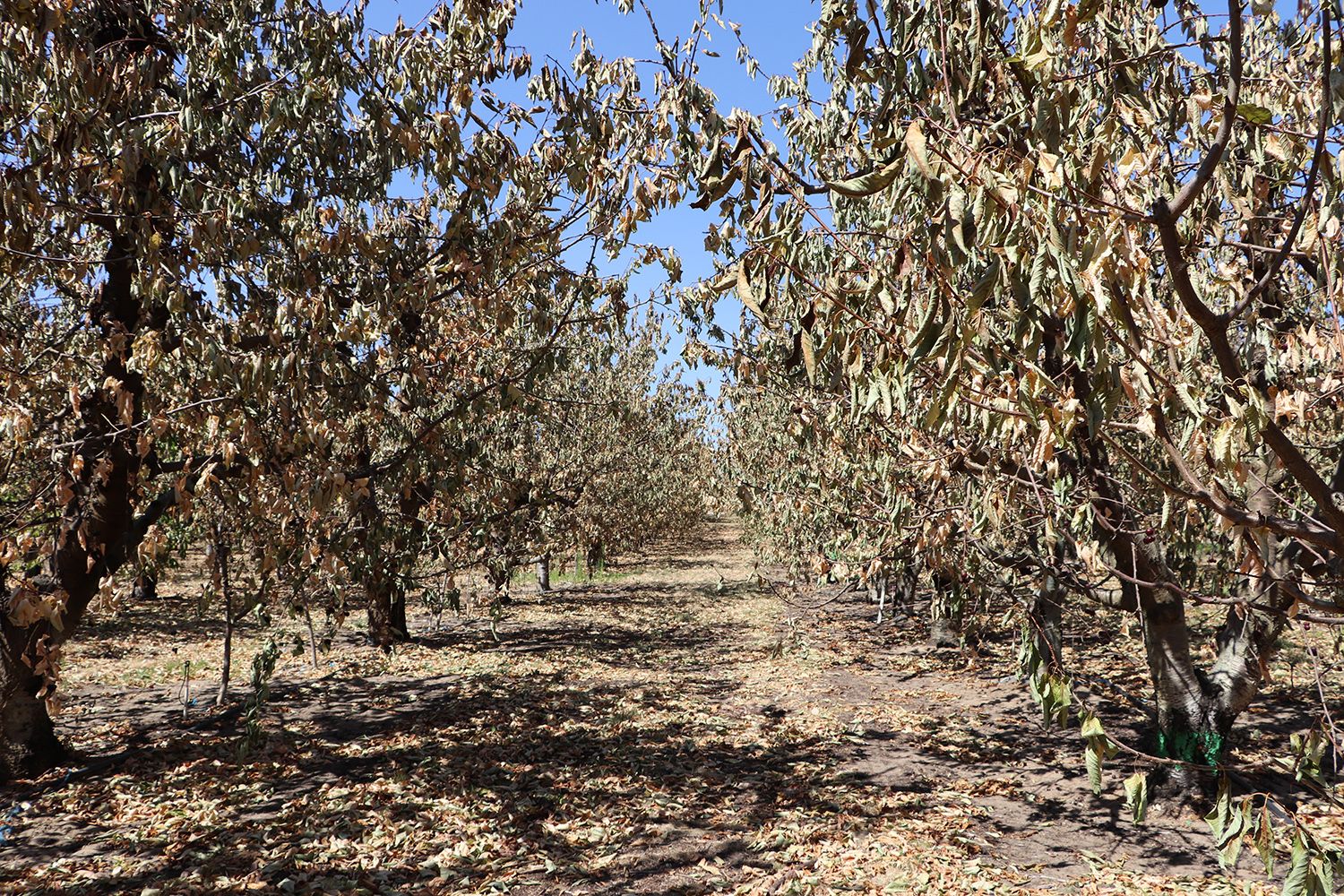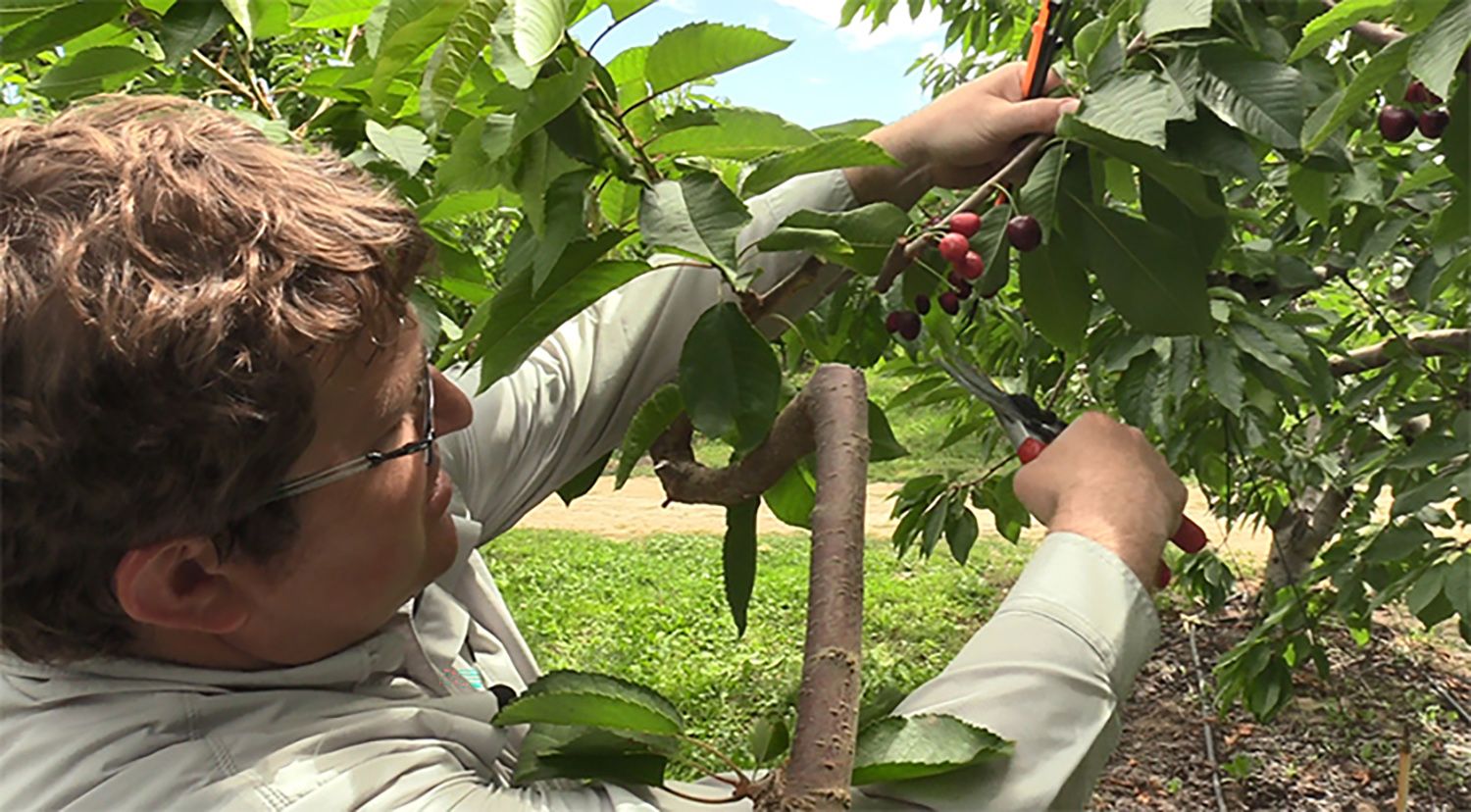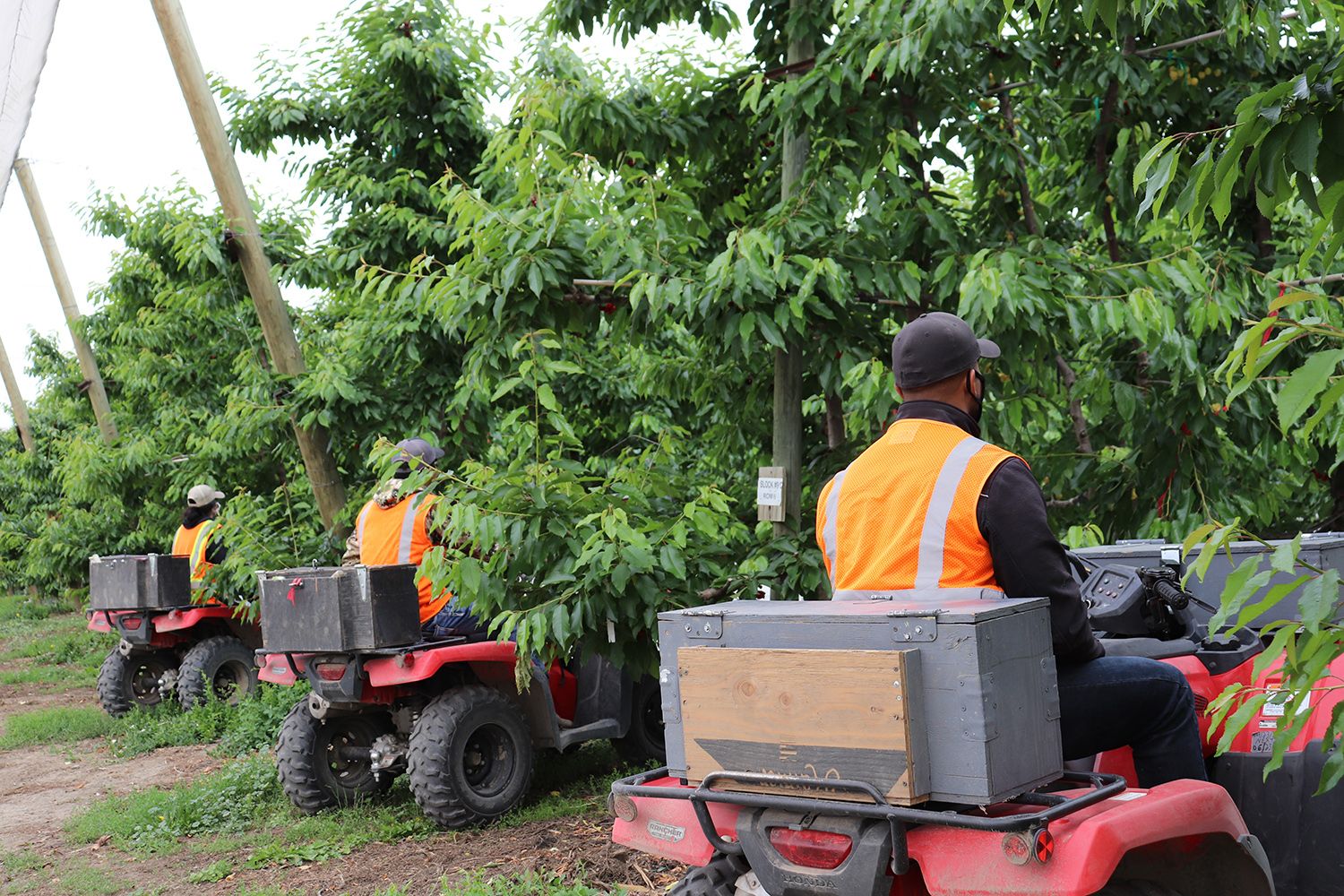Scouting and Sampling Examples
Example: Stemilt
Hannah Walters’ group works in teams with a lead scout. Scouts GPS tag and flag symptomatic trees. They send in a portion of symptomatic trees for laboratory confirmation to check accuracy for new scouts. For example, if they flag 20 trees, they send in samples for 10. If all 10 come back positive they remove all 20 flagged trees. For removal they use either the herbicide painted cut stump or “notch” drill and inject herbicide method. Walters says “We are finding X scattered randomly in blocks vs hot spots so it is important to look at all trees in a block.” They consider age of trees and economics of block when deciding whether to remove a whole block.
.jpeg)
Example: Goldy
Dale Goldy’s scouts walk the block in the week before harvest. They find there are too many false negatives when scouting is done earlier. They look at every tree. “We want to find new outbreaks so we have to look at every tree.” They remove symptomatic/ positive trees by first drilling and applying herbicide in holes and then cutting out dead trees. They find that timing for herbicide application is important. Trees treated in August die quickly. If more than 20% of the block is affected they remove the entire block.

Example: GS Long
Garrett Bishop and his group focus on spots identified by growers or fieldmen and then randomly scout at least 25% of entire block. Using quads in low gear (about 3 miles per hour) they look at the whole tree when scouting and sampling, especially concentrating on both small limbs off the main scaffold and the lower section of the tree that often seem to be symptomatic. The growers GS Long scout for remove trees using either the cut stump or notch (drill) herbicide method.

Example: Zirkle
Teah Smith and her crew scout in teams. Teams scout with one person on each side of the tree on four-wheelers in low gear looking at every tree. They flag trees with flagging tape that is labeled numerically and alphabetically (eg. Sample 22 is positive so the 8 trees around it are labeled as 22A, 22B, 22C, etc). They remove positive trees and sample from adjoining trees. If adjoining trees are positive, they are removed, and the next tree out sampled until trees are all negative. They remove trees by pulling trees, removing as many roots as possible. Generally, if more than 20-30% of the block is infected/ has been removed from LCD, the entire block is removed.
